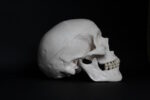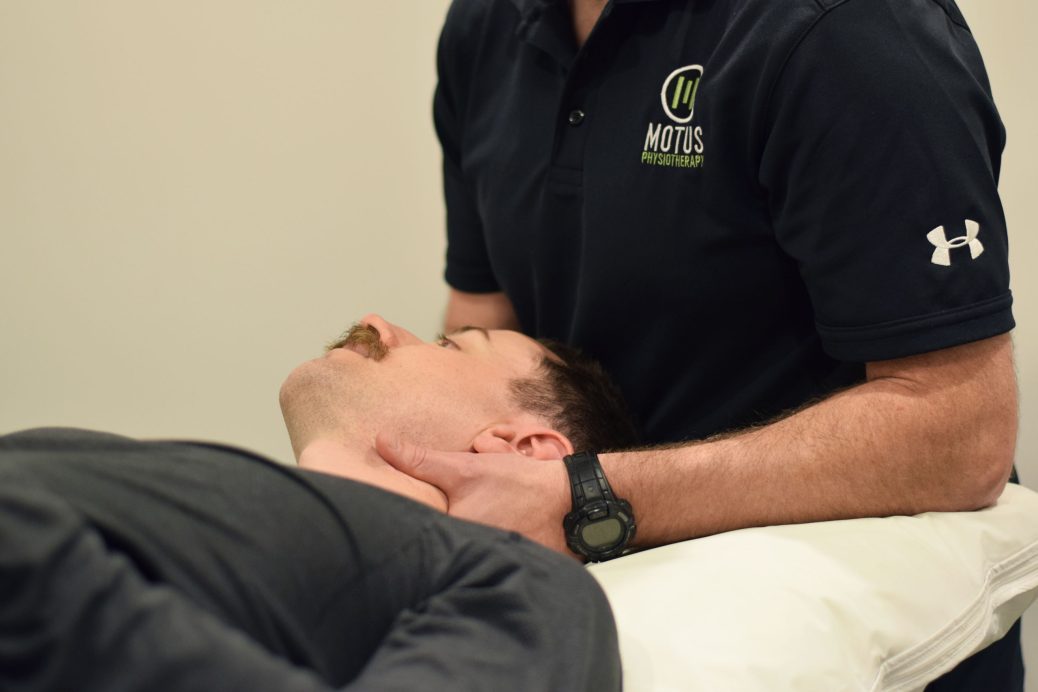Do you ever get aches or pains in your jaw and have difficulty pinpointing the cause of the pain? There’s a lot going on with your jaw, and the supporting structures can become injured and strained, just like your knees and shoulders. In this article we’ll discuss the anatomy of the jaw, and provide some helpful info on why it could become irritated.
Say Hello to the Temporomandibular Joint
The main functional joint in the jaw is the temporomandibular joint (TMJ). This area can cause pain and dysfunction for many people – problems which can disrupt important daily activities such as eating and speaking. When the TMJ or related structures are causing pain and/or dysfunction, we refer to this as temporomandibular dysfunction or TMD. TMD can have a wide variety of causes and can be associated with issues in other related areas causing headache, ear-related symptoms, neck pain, and posture changes.
People experiencing TMD symptoms often first think of seeing a dentist, but did you know your physiotherapist can also help?
Physiotherapists are trained in assessing and treating ALL joints and muscles in the body – including the TMJ! This area can be a bit tricky and at times your physiotherapist may consult with your dentist to come up with the best treatment options for you.
How does a physiotherapist treat the jaw?
Well, first we do a through assessment of the area to determine what may be causing the pain and other symptoms you are experiencing. Your physiotherapist will ask a lot of questions about your symptoms, dental history, and habits (like nail biting) – all things that can impact the TMJ. This assessment will help your physiotherapist determine your mechanism of injury as and will guide them to establish goals for treatment. They will then look at the movement of your TMJ and your neck, along with the other muscles and tissues in the area.
Treatment may involve manual therapy (hands on) techniques that are both extra-oral (outside the mouth) or intra-oral (inside the mouth), and exercises specific to your presentation. It is never a one-size fits all approach – treatment needs to be individualized to you.
Does physiotherapy for the jaw work?
Yes! For many individuals physiotherapy treatment of TMD can be very effective. Just like with other areas of the body, manual therapy and exercise can be used in combination to help restore movement, reduce pain and improve awareness of the area – all of which benefits quality of life!

References
Asquini, G., Pitance, L., Michelotti, A., & Falla, D. (2022). Effectiveness of manual therapy applied to craniomandibular structures in temporomandibular disorders: A systematic review. Journal of oral rehabilitation, 49(4), 442–455. https://doi.org/10.1111/joor.13299
Armijo-Olivo, S., Pitance, L., Singh, V., Neto, F., Thie, N., & Michelotti, A. (2016). Effectiveness of Manual Therapy and Therapeutic Exercise for Temporomandibular Disorders: Systematic Review and Meta-Analysis. Physical therapy, 96(1), 9–25. https://academic.oup.com/ptj/article/96/1/9/2686339
Morell G. C. (2016). Manual therapy improved signs and symptoms of temporomandibular disorders. Evidence-based dentistry, 17(1), 25–26. https://www.nature.com/articles/6401155


